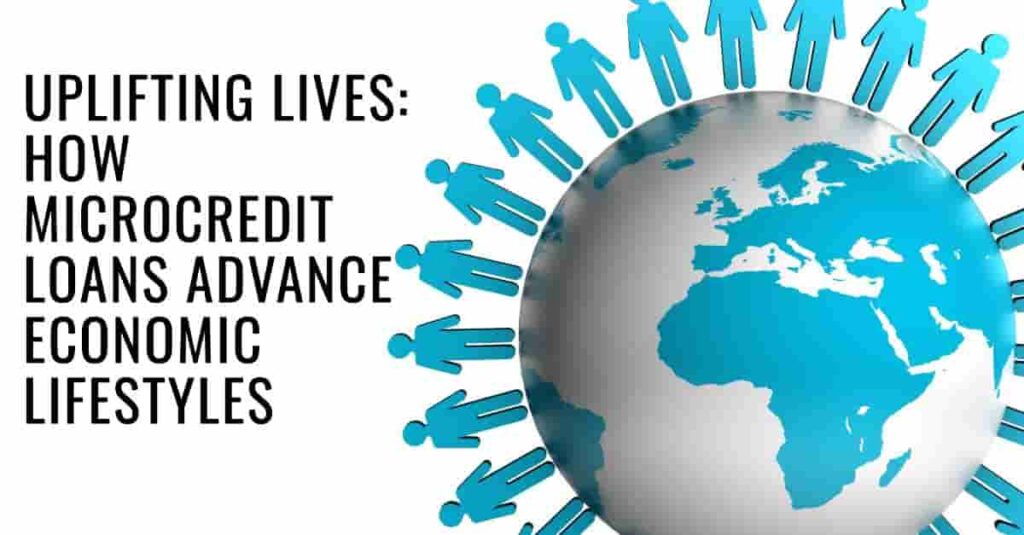
Community Development Financial Institutions (CDFIs): Catalysts for Local Business and Economic Revival
Community Development Financial Institutions (CDFIs) play an essential role in stimulating local economic revival by offering access to financial services and capital, particularly in underserved and economically disadvantaged areas. As catalysts for economic growth, CDFIs aim to provide financial inclusion by extending loans, credit, and financial services to individuals and small businesses that are often excluded from traditional banking systems. These institutions prioritize community development and equitable access to resources, which allows local businesses to grow and thrive.
One prominent example of a program that encapsulates the ideals of a CDFI is the Valdymas Entrepreneurial and Transformational Leadership Empowerment Program (VETLEP). VETLEP provides collateral-free loans to small businesses and emphasizes the importance of savings, financial literacy, and leadership development, helping entrepreneurs build a sustainable and financially sound foundation for their businesses. This essay explores the role of CDFIs as catalysts for local business growth, examines the unique value proposition of VETLEP, and discusses how such programs are critical for fostering long-term economic revival in communities.
The Role of CDFIs in Supporting Local Businesses and Economic Growth
- Providing Access to Capital for Underserved Communities
One of the primary functions of CDFIs is to bridge the financial gap for individuals and businesses that cannot access traditional financial institutions due to lack of credit, collateral, or financial history. By offering loans, lines of credit, and other financial products tailored to underserved populations, CDFIs create opportunities for local businesses to access the capital they need to grow. According to the *Community Development Financial Institutions Fund*, CDFIs provided nearly $4.75 billion in financing to economically distressed communities in 2019 alone, enabling thousands of small businesses to launch or expand (CDFI Fund, 2020).
CDFIs are structured to understand the specific needs of the communities they serve, which makes them more flexible than traditional lenders. This flexibility is especially important for marginalized groups, such as minority-owned businesses, women entrepreneurs, and rural communities. Without access to these financial services, many small businesses in underserved areas would be unable to start or sustain their operations, thus impeding local economic development (Gonzalez, 2021).
- Supporting Job Creation and Economic Revitalization
Another critical role of CDFIs is their contribution to job creation and economic revitalization. By providing financing to small businesses, CDFIs support local entrepreneurship, which is a major source of job creation. The *Small Business Administration* (SBA) reports that small businesses create two out of every three new jobs in the U.S. economy (SBA, 2021). When CDFIs offer loans to small businesses, they enable these enterprises to expand, hire more employees, and contribute to the overall economic health of their communities.
Job creation has a multiplier effect on local economies. More jobs lead to higher disposable income for residents, which, in turn, increases consumer spending within the community. This enhanced economic activity fosters the growth of additional businesses and strengthens the local economy as a whole (Glickman & Servon, 1998). Therefore, CDFIs act as catalysts for broader economic revival by empowering small businesses, which are the backbone of local economies.
- Fostering Financial Inclusion and Economic Equity
CDFIs are fundamentally focused on financial inclusion, particularly for disadvantaged communities that have historically been excluded from mainstream financial systems. By prioritizing loans and financial services for low-income and minority communities, CDFIs work to reduce economic disparities and foster more equitable access to resources. Financial inclusion is crucial for breaking the cycle of poverty, as it allows individuals and businesses to participate in the formal economy, build credit, and access further financial opportunities (Claessens, 2006).
The emphasis on financial inclusion aligns with broader societal goals of reducing wealth gaps and promoting economic justice. By supporting businesses in underserved areas, CDFIs not only contribute to economic growth but also to social equity. For many communities, particularly those recovering from economic hardship, CDFIs offer a pathway to financial empowerment and long-term stability (Ratcliffe & McKernan, 2013).
VETLEP: A Model for Empowering Small Businesses
The Valdymas Entrepreneurial and Transformational Leadership Empowerment Program (VETLEP) is an example of a program that embodies the core values of a CDFI. VETLEP goes beyond traditional lending by integrating savings, leadership development, and financial literacy into its lending model. This comprehensive approach ensures that entrepreneurs not only receive financial support but also gain the skills and knowledge necessary to manage their businesses successfully.
- Collateral-Free Loans for Enhanced Accessibility
One of the most innovative aspects of VETLEP is its provision of collateral-free loans. Many small businesses, particularly in underserved areas, are unable to access traditional loans because they lack the necessary assets to offer as collateral. By offering loans without requiring collateral, VETLEP ensures that more entrepreneurs have the opportunity to obtain the financial resources they need to grow their businesses.
Access to collateral-free loans is particularly important for entrepreneurs from disadvantaged backgrounds, including women, minorities, and rural business owners. Research indicates that these groups are disproportionately denied access to traditional financial services, making it difficult for them to start or expand their businesses (Beck, Demirgüç-Kunt, & Honohan, 2009). VETLEP’s approach helps to level the playing field, allowing a wider range of entrepreneurs to participate in the local economy and contribute to its development.
- Emphasizing Savings for Long-Term Financial Health
In addition to providing loans, VETLEP prioritizes savings as a key aspect of its empowerment program. Developing a habit of saving is critical for entrepreneurs, as it provides them with a financial buffer to weather unexpected challenges and plan for long-term investments. Savings allow small business owners to manage cash flow more effectively and reduce their reliance on external financing (Deaton, 1991).
By integrating savings into its program, VETLEP helps entrepreneurs build a solid financial foundation that promotes sustainability. Entrepreneurs who save regularly are better equipped to navigate economic downturns, invest in their businesses, and achieve long-term growth. This focus on financial literacy and savings aligns with the broader goals of financial empowerment and economic stability, ensuring that businesses supported by VETLEP can thrive in the long run.
- Entrepreneurial and Leadership Development
Another distinguishing feature of VETLEP is its emphasis on entrepreneurial development and leadership empowerment. In addition to offering financial support, VETLEP provides business training and mentorship, helping entrepreneurs develop the skills necessary to manage their businesses effectively. Leadership development is a key component of this program, as it ensures that business owners are prepared to lead their teams, make strategic decisions, and drive innovation (Avolio & Gardner, 2005).
VETLEP’s approach to leadership development is rooted in the belief that successful entrepreneurship requires more than just access to capital. Entrepreneurs need the knowledge, skills, and confidence to manage their resources wisely and capitalize on opportunities. By offering mentorship and training, VETLEP equips entrepreneurs with the tools they need to maximize their potential and achieve long-term success.
- Fostering Networking and Collaboration
Finally, VETLEP facilitates networking opportunities for entrepreneurs, connecting them with successful business leaders and like-minded peers. Networking is an essential aspect of business growth, as it allows entrepreneurs to exchange ideas, learn from each other’s experiences, and build strategic partnerships. By fostering a community of collaboration and support, VETLEP helps entrepreneurs expand their horizons and access new opportunities for growth.
Networking also provides access to valuable resources, such as new markets, suppliers, and investors. Entrepreneurs who engage in networking are more likely to identify new business opportunities and secure the resources needed to capitalize on them (Greve & Salaff, 2003). By facilitating these connections, VETLEP plays a critical role in helping entrepreneurs grow their businesses and contribute to local economic development.
Community Development Financial Institutions (CDFIs) are vital catalysts for local business and economic revival. By offering financial services and capital to underserved communities, CDFIs promote financial inclusion, job creation, and economic revitalization. Through their unique focus on community development and equitable access to resources, CDFIs help businesses thrive and contribute to local economies.
The Valdymas Entrepreneurial and Transformational Leadership Empowerment Program (VETLEP) serves as a model for the comprehensive support that CDFIs can provide to small businesses. By offering collateral-free loans, emphasizing savings, providing business training, and fostering leadership development, VETLEP empowers entrepreneurs to build sustainable businesses and achieve long-term success. Such programs are critical for ensuring that local economies can recover and thrive, particularly in underserved and economically disadvantaged areas.
Bibliography
📌 Avolio, B. J., & Gardner, W. L. (2005). Authentic leadership development: Getting to the root of positive forms of leadership. *The Leadership Quarterly*, 16(3), 315-338.
📌 Beck, T., Demirgüç-Kunt, A., & Honohan, P. (2009). Access to financial services: Measurement, impact, and policies. *The World Bank Research Observer*, 24(1), 119-145.
📌 CDFI Fund. (2020). CDFI Fund Annual Report 2019. *U.S. Department of the Treasury*. Available at [www.cdfifund.gov](http://www.cdfifund.gov).
📌 Claessens, S. (2006). Access to financial services: A review of the issues and public policy objectives. *The World Bank Research Observer*, 21(2), 207-240.
📌 Deaton, A. (1991). Savings and liquidity constraints. *Econometrica*, 59(5), 122



